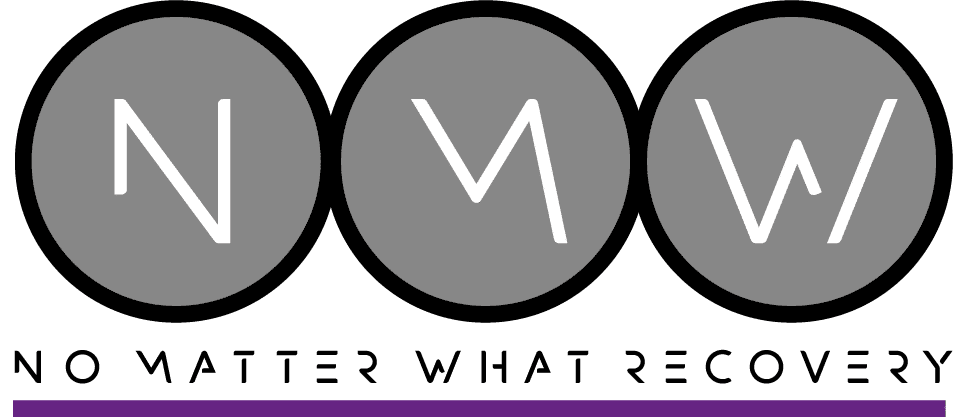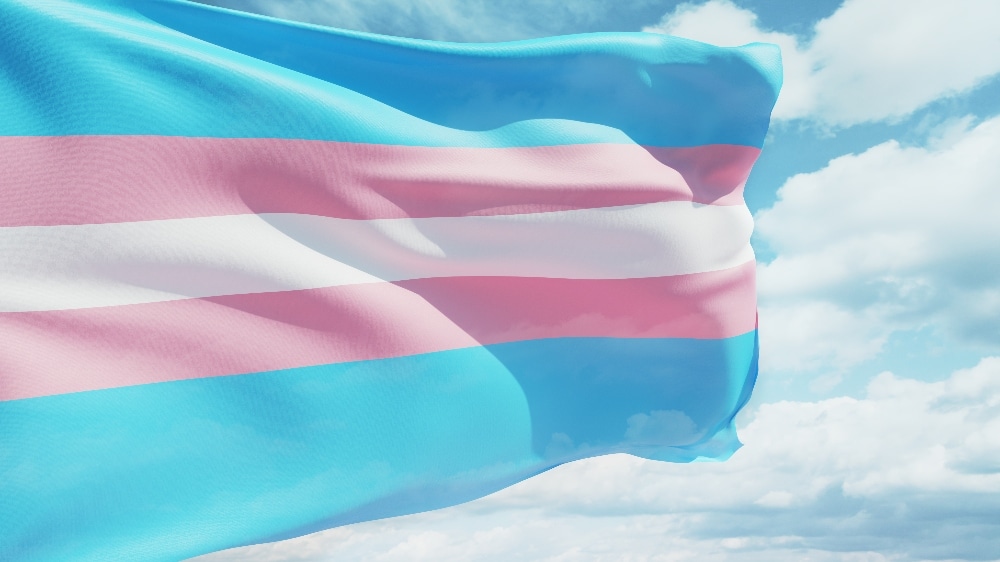When examining prescription drug misuse, a recent national study of individuals with commercial insurance found that 4.3% of the transgender sample had a drug use disorder diagnosis compared to just 1.2% of cisgender individuals. This includes concerning patterns of substance use disorder diagnoses involving steroids and other performance-enhancing substances, particularly among transgender men seeking to align their physical appearance with gender norms. This represents a significant disparity that underscores the need for targeted intervention and prevention efforts through specialized outpatient rehab programs.
The Bottom Line: Transgender individuals face significantly higher rates of substance use compared to their cisgender peers, with research showing transgender youth are 2.5-4 times more likely to engage in substance use behaviors. These disparities stem primarily from minority stress, discriminatory laws, and systemic barriers to healthcare rather than gender identity itself.
Understanding the complex relationship between transgender identity and substance misuse is crucial for providing effective, culturally competent care. At No Matter What Recovery, we recognize that transgender substance abuse requires specialized treatment approaches that address both addiction and the unique challenges faced by gay and transgender population members, including lesbian, bisexual, and non-binary individuals through our LGBTQ+ programs.
The Reality of Transgender Substance Abuse Statistics
Alarming Prevalence Rates
Recent research reveals concerning disparities in substance misuse among transgender populations. Among transgender individuals, 28.2% and 31.2% reported hazardous drinking and problematic drug use, respectively. Transgender nonbinary individuals had the highest odds of substance and mental health problems. Research indicates that between 20 percent to 30 percent of gay and transgender people abuse substances, compared to about 9 percent of the general population.
The statistics are even more alarming for transgender youth. The prevalence of substance use was 2.5-4 times higher for transgender youth compared with their nontransgender peers, depending on the substance. Studies show that about a quarter of transgender youth reported smoking cigarettes or cannabis in the past month, while fewer youth reported past-month binge drinking at 19.4%. Heavy episodic drinking patterns are particularly concerning among trans female youth and trans masculine populations. Importantly, research suggests that transgender people do not have higher odds of substance use disorder, but rather are more likely to use substances, especially at younger ages.
Substance-Specific Patterns
Research indicates varying patterns across different substances. Studies show mixed findings regarding alcohol use among transgender adults compared to cisgender peers. Alcohol misuse and alcohol use disorder present complex patterns, with given the association between negative health outcomes and minority stress, it was surprising that there was no difference between transgender and cisgender adults in hazardous drinking or problematic drug use in some studies. However, higher rates of nicotine use are consistently documented across research, and cannabis use shows particularly elevated rates among transgender youth. Concerning patterns also emerge with cocaine, amphetamines, ecstasy, heroin, opioids, and prescription medications misuse in transgender populations.
When examining prescription drug misuse, a recent national study of individuals with commercial insurance found that 4.3% of the transgender sample had a drug use disorder diagnoses compared to just 1.2% of cisgender individuals. This represents a significant disparity that underscores the need for targeted intervention and prevention efforts through specialized outpatient rehab programs.
Understanding the Minority Stress Model
The Foundation of Disparities
The minority stress model is distinguished from general stress by its origin in prejudice and stigma. For transgender individuals, this manifests through both external and internal gender minority stressors that create a chronic state of heightened psychological distress and vulnerability. This framework helps explain the mental health disparities observed across transgender men, transgender women, and non-binary populations.
External minority stressors include interpersonal discrimination in healthcare, employment, and housing, as well as violence and harassment in public accommodations. Family rejection and social isolation compound these challenges. Research demonstrates that external minority stress was associated with increased odds of same-day drug use, highlighting the immediate impact of transphobic discrimination on coping behaviors.
Internal minority stressors encompass internalized transphobia, identity concealment, negative expectations for future interactions, and gender dysphoria-related distress. These internal struggles often develop as a result of repeated exposure to external discrimination and can persist even in supportive environments. The social-ecological framework helps us understand how these individual experiences are shaped by broader systemic factors.
The Connection to Substance Use
Transgender and gender-diverse people are at higher risk for drug use and drug use disorder than their cisgender peers. Theory and research has suggested that external minority stressors such as discrimination, violence, and rejection, along with internal minority stressors like internalized transphobia, may contribute to this health disparity. The transgender/transsexual men and women community faces unique challenges that require specialized substance use intervention approaches.
Research demonstrates that external minority stress is associated with drug use on the same day, highlighting the immediate impact of discrimination and rejection on coping behaviors. This finding suggests that substance use often serves as a maladaptive coping mechanism for dealing with the acute stress of discrimination and rejection.
Healthcare Barriers Compound the Problem
Widespread Discrimination in Healthcare Settings
The healthcare system itself often perpetuates the very stressors that drive substance use. Nearly 1 in 2 transgender respondents, including 68 percent of transgender respondents of color, reported experiencing some form of discrimination or mistreatment at the hands of a health provider in the year prior to one major survey. This mistreatment included care refusal, misgendering, and verbal or physical abuse. As a result, up to 26% of transgender individuals in the US use or have used drugs or alcohol to cope with trauma, abuse, or transphobia.
Specific Barriers to Substance Abuse Treatment
Transgender individuals face unique challenges when seeking substance abuse treatment. There is a documented shortage of providers specialized in areas such as HIV risk, substance abuse, and mental health for transgender individuals. This shortage is compounded by limited training in transgender-specific issues among healthcare providers, particularly regarding LGBTQI+ health and cultural sensitivity.
Systemic barriers create additional obstacles to care. Twenty-eight percent of transgender respondents reported postponing or avoiding necessary medical care in the year prior to surveys for fear of experiencing discrimination. Insurance coverage limitations for gender-affirming care, along with inappropriate healthcare forms and electronic records, further complicate access to treatment.
Perhaps most concerning is that LGBTQ+-affirming substance use treatment and related services remain limited. Only a small number of treatment programs offer substance misuse services specific for sexual and gender minorities, despite the clear need for specialized care that addresses the unique challenges faced by transgender individuals entering substance use treatment.
The Youth Crisis: Early Intervention is Critical
Heightened Vulnerability
Transgender youth face particularly severe risks when it comes to substance use. Research consistently shows that transgender youth are at heightened risk for substance use compared with nontransgender peers. Additionally, transgender youth were also at greater risk for early age of onset and recent substance use than nontransgender youth, suggesting that interventions must begin early to be most effective.
Contributing Factors for Youth
School-based stressors play a significant role in driving substance use among transgender youth. Bullying and harassment based on gender identity, lack of supportive school policies, and limited access to gender-affirming facilities create environments where substance use becomes a coping mechanism.
Family dynamics also contribute significantly to risk. Lack of family support and acceptance, combined with religious or cultural conflicts, can drive young people toward substance use as a way to manage emotional pain.
Developmental challenges unique to transgender youth include identity exploration during vulnerable developmental periods, social isolation from transgender peers, and limited access to gender-affirming care including surgical procedures and gender-disconcordant hormones. These factors combine to create a perfect storm of risk factors that predispose transgender youth to substance use disorders. Trans female youth face particularly heightened risks due to societal rejection and violence.
Mental Health Comorbidities
The Intersection of Mental Health and Substance Use
Transgender individuals experience dramatically higher rates of mental health challenges that often co-occur with substance use disorders. Research shows that 44.4% reported recent suicidal ideation, while 6.9% reported a recent suicide attempt. Healthcare providers diagnose half of transgender individuals with depression and anxiety, compared with 20% of the general population. Most alarmingly, up to 41% of transgender and nonbinary people have attempted suicide at some point in their lives. Additional concerns include disordered eating patterns and episodes of psychosis related to severe psychological distress and depressive symptoms.
Self-Medication Patterns
Many transgender individuals turn to substances as a way to cope with gender dysphoria symptoms, social rejection and isolation, mental health symptoms, and medical transition-related stress. This self-medication pattern often develops as a response to inadequate or inaccessible mental healthcare, creating a cycle where substance use temporarily alleviates distress but ultimately worsens overall functioning and wellbeing. Understanding these patterns is crucial for effective dual diagnosis treatment that addresses both substance use and underlying mental health conditions. Traumatic experiences, including childhood trauma and ongoing discrimination, significantly contribute to these self-medication patterns.
Addressing Healthcare Disparities
The Need for Culturally Competent Care
Stigma and discrimination from health care providers has been explicitly linked to increased levels of substance use among transgender individuals. This creates a destructive cycle where the very system meant to provide help becomes a source of additional trauma.
Essential elements of affirming care include the consistent use of correct names and pronouns, understanding of transgender experiences and terminology, non-judgmental and respectful treatment approaches, and integration of gender-affirming care with substance abuse treatment. These elements must be woven throughout all aspects of care, from initial intake through ongoing treatment and aftercare planning.
Treatment Program Recommendations
Effective transgender substance abuse treatment must address root causes rather than just symptoms. Participants in research studies appreciated when providers understood that elements of minority stress such as discrimination and stigma, as well as identity concealment and general stressors like childhood traumas, contributed to addiction as self-medication.
Comprehensive support should include mental health services integrated with addiction treatment, support for family relationships and social connections, assistance with legal and social transition needs, and connection to transgender community resources. This holistic approach recognizes that recovery cannot occur in isolation from the broader context of a person’s life and identity. Programs like our Intensive Outpatient Program (IOP) provide the flexibility to address these multiple needs while maintaining daily life responsibilities.
Ensuring safe environments is crucial because many transgender individuals report concealing their identities in substance use treatment settings due to experiencing or anticipating discrimination and stigma. This requires comprehensive staff training on LGBTQ+ cultural competency and robust anti-discrimination policies with clear enforcement mechanisms.
Protective Factors and Resilience
Building Support Systems
Research identifies key protective factors that can reduce substance use risk among transgender individuals. Studies consistently show that transgender and nonbinary people who receive support from their parents, families, and friends have improved mental health and well-being. Family connectedness was specifically related to lower levels of tobacco and cannabis use, and having more than one protective factor significantly lowered the probability of engaging in substance use behaviors.
Community connection serves as another crucial protective factor. Access to supportive transgender communities, involvement in LGBTQ+ organizations and activities, and peer support and mentorship programs can provide the social support and belonging that many transgender individuals lack in their families of origin or broader communities.
Healthcare access represents a third critical protective factor. Regular, affirming healthcare relationships, access to gender-affirming medical care, and mental health support services create a foundation of stability and support that can prevent or interrupt patterns of substance use as coping mechanisms. For many transgender individuals, finding appropriate trauma therapy becomes an essential component of comprehensive care.
Prevention and Early Intervention Strategies
School-Based Programs
Educational institutions play a crucial role in prevention efforts. Implementation of anti-bullying policies that explicitly include gender identity, comprehensive training for teachers and staff on transgender issues, creation of Gender-Sexuality Alliance programs, and access to supportive counseling services can create school environments that support rather than marginalize transgender students.
Healthcare Provider Training
Specialized substance abuse interventions must take gender minorities into consideration, and the professionals delivering them must have sufficient training to provide this demographic with appropriate care. Key training elements should include understanding of minority stress theory, transgender terminology and experiences, cultural humility and bias recognition, and integration of gender-affirming care principles into all treatment modalities.
Policy and Advocacy
Systemic change requires coordinated advocacy efforts focused on anti-discrimination legislation in healthcare settings, insurance coverage for gender-affirming treatments, funding for LGBTQ+-specific treatment programs, and increased research into transgender-specific treatment approaches. These policy changes must address both individual-level barriers and systemic inequities that perpetuate health disparities.
Treatment at No Matter What Recovery
Our Approach to Transgender Substance Abuse
At No Matter What Recovery, we understand that effective treatment for transgender individuals requires a comprehensive approach that goes beyond traditional addiction treatment models. Our individualized assessment process includes comprehensive evaluation of minority stress factors, assessment of gender dysphoria and transition needs, evaluation of family and social support systems, and co-occurring mental health disorder screening.
Our integrated treatment plans coordinate with gender-affirming healthcare providers, incorporate mental health services addressing trauma and minority stress, include family therapy and relationship counseling when appropriate, and facilitate connection to community resources and support groups. This collaborative approach ensures that all aspects of a person’s recovery are addressed simultaneously rather than in isolation.
We maintain a safe and affirming environment through comprehensive staff training on transgender issues and cultural competency, consistent use of chosen names and pronouns in all settings, private and gender-affirming facilities and policies, and a zero-tolerance policy for discrimination or harassment.
Evidence-Based Treatment Modalities
Our treatment approach incorporates several evidence-based modalities adapted for the unique needs of transgender individuals. Cognitive Behavioral Therapy focuses on addressing negative thought patterns related to minority stress, developing healthy coping strategies for discrimination, and managing co-occurring anxiety and depression. Our CBT therapy programs are specifically adapted to address the unique challenges faced by transgender individuals.
Dialectical Behavior Therapy provides emotion regulation skills for managing dysphoria, distress tolerance techniques for crisis situations, and interpersonal effectiveness skills for navigating complex relationships and social situations. These skills are particularly valuable for transgender individuals who face ongoing stressors related to their identity. Our DBT therapy programs incorporate gender-affirming approaches throughout treatment.
Trauma-informed care recognizes trauma’s role in substance use, processes experiences of discrimination and rejection, and builds resilience and post-traumatic growth. This approach is essential given the high rates of trauma exposure among transgender individuals.
Group therapy options include LGBTQ+-specific support groups when possible, skill-building groups for minority stress management, and family therapy groups for improving relationships. These group modalities provide opportunities for connection and mutual support that can be particularly healing for individuals who have experienced social isolation and rejection. Our group therapy programs create safe spaces for transgender individuals to connect with others who understand their experiences.
A Call for Comprehensive, Affirming Care
The evidence is clear: transgender individuals face disproportionately high rates of substance use driven primarily by minority stress, discrimination, and systemic barriers to care. These disparities represent not just individual tragedies but a public health crisis requiring immediate, comprehensive intervention.
Clinicians working with transgender and gender-diverse individuals should assess for minority stress and possible related drug use behavior. Treatment providers must move beyond traditional addiction models to embrace approaches that address the root causes of transgender substance abuse while providing safe, affirming environments for healing.
At No Matter What Recovery, we’re committed to being part of the solution. Our LGBTQ+-affirming programs recognize that recovery for transgender individuals requires more than addressing substance use—it requires addressing the systems and stressors that drive addiction in the first place. We integrate evidence-based approaches with culturally competent care through our comprehensive treatment programs.
If you or a loved one is struggling with substance abuse and transgender-related challenges, help is available. Our culturally competent, trauma-informed approach addresses the unique needs of transgender individuals while providing the comprehensive support necessary for lasting recovery. Learn more about our approach by visiting our about page or exploring our specialized programs.
For more information about our transgender-affirming substance abuse treatment programs, contact No Matter What Recovery. Recovery is possible, and no one should face these challenges alone.

Mell McCracken, CADC-II, ASAT, RAE
Mell McCracken is the Executive Director of No Matter What Recovery, serving as the leader of the clinical treatment program and overseeing our sexualized drug use curriculum.
Mell is nationally and internationally recognized as an LGBT+ educator, co-author, and treatment provider. They also serve as faculty member at the International Institute of Trauma and Addiction Specialists. They are committed to uplifting voices and breaking stigmas, one conversation at a time, and have spent their career fighting for inclusivity and empowerment through chemsex education and LGBT+ activism.







